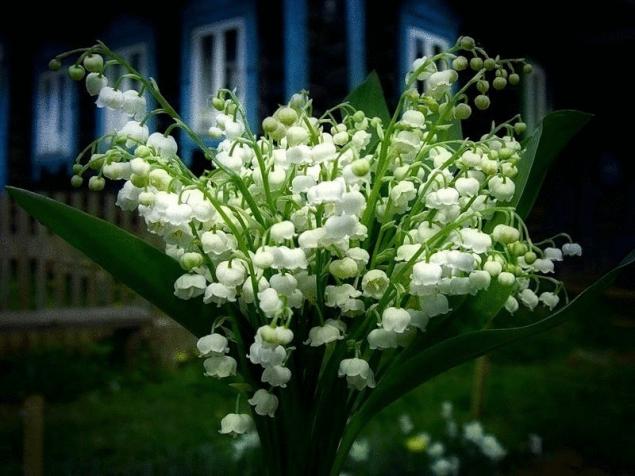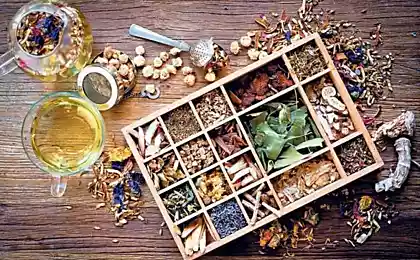229
Be careful: killer flowers

Flowers that bring healing from many diseases, and, as the ancients said, "healing from the main ailment - life." Modest, dull eyes-buds, they grow on a flowerbed, pleasing to our eyes. So familiar from childhood, almost relatives.
But many of them have secret names under which they entered history. The history of the great poisonings.

Dolphinium or vivacity, can become an ornament of any flowerbed. But it is also the source of the strongest poison, comparable in strength to curare - the poison in which the Indians dipped their arrows. According to legend, the dolphinium grew out of the body of Ajax, who was killed in the capture of Troy, absorbing his power and madness. This flower received its name in honor of the dolphin - an animal dedicated to Apollo (the kidneys entering the inflorescence resemble the back of a dolphin jumping out of the sea).
But Apollo carries not only light - death at the hands of this golden-cured god, who did not hesitate to send pestilences to villages, can be terrible. So the dolphinium, adorned with lush brushes of bright colors, contains alkaloids, which at toxic doses can cause respiratory paralysis and cardiac arrest. The greatest concentration of alcoloids is observed in the leaves during the ripening of seeds and in the rhizome at the initial stage of vegetation. Although the ancient Greeks were unaware of the dark forces lurking in the beautiful Dolphinium, they revered it as a flower of sadness.

- That cikuta?
This plant looks so innocent: white flowers collected in idyllic umbrellas. The reddish straight stem and rhizome with a delicate smell of dried fruits (or carrots) have a sweetish taste. Woe to anyone who has experienced this sweetness. The price of curiosity will follow in a quarter of an hour. The unfortunate will begin severe abdominal pain, salivation, vomiting and diarrhea, then - convulsions, which can lead to respiratory and cardiac arrest.
Unfortunately, the rhizome of a poisonous milestone is often confused with turnips or carrots, and the plant itself - with a diagil and a blower. However, it can be recognized by breaking the rhizome - it is hollow, and inside is divided into chambers filled with light yellow juice. This juice contains cycutotoxin - a potent poison. Poisonous and other parts of the plant.
In the people, the poisonous milestone is called an outcast, a dog diagile, a screamer, a rabies. No less terrible name gave this plant and Carl Linnaeus – Cicuta virosa. The juice of cikuta took the life of the legendary philosopher Socrates. But like every defendant, the poisonous milestone must have lawyers. And they were scientists who proved that the milestone poisonous, most likely, was not involved in the death of Socrates - not those symptoms of poisoning, and the plant that we call zikuta now, in Greece of those times was not found.
But what then did the ancients mean by zikuta? What plant did Diogenes of Laertius mean when he exclaimed:
Drink with Zeus in the palace, Socrates! You're named for God.
Is not wisdom the true God?
You have taken a deadly tsikuta from the judges of Athens.
But not to you, but to themselves they found death in it!
So what killed Socrates? Most scientists are inclined to believe that the philosopher’s executioner was a speckled hemlock. This plant grew everywhere in Greece, and the symptoms of hemlock poisoning are very similar to what Socrates felt before his death. Once in the stomach of a person, the juice (or decoction) of a hemlock causes nausea, often vomiting and diarrhea. There is a loss of sensitivity and gradual paralysis, starting with the legs. Then there is a stop of breathing, leading to death. It only takes two hours for a hemlock to deal with its victim. No wonder he played the role of official executioner in ancient Greece.
This is a herbaceous plant, often reaching 1 m in height. Small white flowers, folded in inflorescences-umbrellas, a high stem is covered with reddish spots. The young plant is sometimes mistaken for edible greens, and the root of the hemlock is confused with parsnips, parsley or horseradish. The main difference between hemlock is the unpleasant (mouse) smell that the plant emits.
Contained in hemlock alkaloid conine is rapidly absorbed into the blood, which explains such a rapid effect of the poison, and has an overwhelming effect on the nervous system, thanks to which it gives almost painless death. Parting with his life, Socrates jokingly asked to sacrifice Asclepius a rooster. In this way he recognized the humanity of such a death and absolved the god of healing from responsibility. What does Asclepius have to do with a hemlock? It's simple: for a long time, the hemlock has been entrenched in the fame of not only a notorious killer, but also a powerful healer, one of Asclepius' favorite plants. The best doctors, whose names have become household names (Hippocrates, Avicenna) recognized for hemlock strong healing abilities, including the treatment of cancer.
Like many plants, hemlock has become a symbol of good and evil, and only a person depends on which side he will take, using the power that nature gave him.
Beautiful as Lilith herself, and just as deadly. Such are many plants that simply substitute their delicate petals to the sun, hoarding deadly poison inside.
Lush poppies are symbols of the theory of killing beauty. The image of a poppy field, to fall asleep on which, as our ancestors believed, is like signing a death sentence, wanders from one folk tradition to another. Having become the great salvation of mankind from sorrow, the poppy has created even greater sorrow. Milky juice, obtained by incision of the green box with poppy seeds, is the same opion (from the Greek “opion”), opium or opium, which has caused the death (physical or moral) of millions of people around the world. Opium is a rattling mixture of alcoloids - codeine, morphine, papaverine (total 20). Overdose of opiates leads to death.
At the beginning of the XX century, the literary circles of France were shocked by the last “joke” of the poet Jacques Vashes. Firmly determined to take his own life, this follower of the then fashionable literary movement Dadaism took an excessive dose of opium. The cruelty of your last step was that he treated his friends who came to him with the same dose, without warning them that the dream they dreamed of would be fatal for them.
"What a horror!" whispered Miss Marple.
Purple foxglove is a beautiful, fairly large plant (its height reaches 150 cm) with spectacular cream, white, pink or a shade of carmine - flowers. The foxglove is the queen of flower beds and... detective novels. Perhaps most often the name of this plant flashes in the works of the most read author of detectives - Agatha Christie. In her story “Dead Grass”, digitalis caused the death of a young girl and the malaise of other heroes. Picked with sage, this plant was mixed with onions, and the resulting mixture stuffed duck.
However, for the sake of justice, it is worth noting that the heroine of the story dies not so much from the fact that she swallowed several sheets of digitalis, but from the fact that the killer added pure digitalis to her portion (a component of digitalis juice). And, nevertheless, foxglove is a poisonous plant, the juice of which has a slowing effect on the work of the heart, causes vomiting, convulsions, can lead to death.
This plant bears the romantic name “belladonna” (translated from Italian – “beautiful woman”), in Russia it is also called “beautiful”. Belladonna is a tall plant with large egg-shaped leaves and sufficiently large purple or brownish-purple bell flowers. Closer to autumn, a brilliant blue-black berry appears on the plant, very appetizing in appearance, nicknamed, however, by the people “mad cherry”. All parts of the plant are considered poisonous - they contain alcoloids such as atropine, scopolamine, hyoscilamine.
But most often the culprit of poisoning is the fruit of beauty - children are seduced by beautiful shiny berries and eat them. Pupil dilation is the first sign of belladonna poisoning (in ancient times, the juice of this plant was buried in the eyes - it was believed that this gives the look languor and passion). If in case of poisoning belladonna do not take action, the victim may have respiratory arrest.

This tall plant, decorated with the brushes of dark blue flowers, its majesty resembles royal persons. However, by its toxicity, aconite (and we are talking about it) can also be considered the king of plants. Ancient Germans, comparing its flowers with the helmet of Thor, soaked in the juice of aconite weapons before going on a hunt or to engage in a fight with an enemy.
According to legend, this flower was born from the saliva of the three-headed Cerberus - the guardian of the underworld of Hades, absorbing all the malice of this mythical monster. Aconite received its name from the city of Acone, where, according to the ancients, the entrance to the Kingdom of the Dead was located.
The plant contains a deadly poison - aconitin. All parts of the plant are poisonous, especially tubers, which are often mistaken for celery.
Aconitin poisoning is characterized by feelings of bitterness and dryness in the mouth, sometimes nausea and vomiting are observed, breathing disorder occurs. Death comes from paralysis of the breath or heart.
Joke of the goddess Flora
In the doubtful company of the souls was a timeless autumn.
It contains the poisonous substance colchicine. As for black bleach, all parts of which contain scopolamine and hyoscilamine, fans of Shakespeare perfectly remember that its juice was poisoned by Hamlet's father.
The bad fame of the “dangerous” plant is used by the freezer, and the open shot (the legendary sleep grass) and many other plants, which are suspected of insidiousness, at first glance, simply impossible!

But it so happened that the most poisonous plants also have the most valuable abilities of a natural healer. This was the greatest joke of the goddess Flora, who equally endowed plants and flowers with the ability to heal and kill. Only he who knows the measure, who respects and strives to understand the philosophy of nature, is able to bypass the traps and turn the power of plants for good. Uneducated, trying to find salvation in a green pharmacy, often get the opposite result, sad and instructive.
Many gardeners want to decorate their plots with decorative conifers. It always creates comfort in the territory. Just be careful when buying juniper Tamariscipol, unlike its prickly counterparts, it is poisonous. Trying the berry to taste you can get serious poisoning, but this is not all trouble. When planting or processing plants, it is difficult not to hurt yourself on needle branches. After such close contact, especially if you prudently did not put on gloves, irritation appears on your hands caused by getting into the wound of poisonous juice.

If you have children or pets, you should not plant a May lily in the garden. This plant is poisonous all - leaves, flowers and berries. Having tried it to the taste of the “experimenter” risks getting a lot of impressions from mild poisoning up to cardiac arrest.
In Europe they love to grow as green hedges Volcheyarodnik (Dafnu). This is a low shrub that blooms with beautiful flowers, and then flaunts with large berries. All parts of the plant contain poisonous juice, even once on the skin it can cause a serious burn, allergists may have blisters and long-term healing ulcers.
Lilies and poppies cause headache When creating an aromatic flowerbed, be careful. All strong-smelling plants like tobacco, poppy, coupen and even daffodils can cause headaches, allergic reactions and even poisoning. When buying lilies, note that royal, longiflorum and OT hybrids smell very strongly.

In the country just walking around the garden you can find a weed plant - black whitewash. If it blossoms, then you will be provided with a flight. Belena belongs to the category of intoxicating plants. And it is very poisonous, and especially during flowering. So it is best to get rid of such a weed in the country, but only before wearing gloves. published
Source: talumala.com/en/dom-i-byt/sad-i-ogorod/tsvety/700-budte-ostorozhny-tsvety-ubijtsy























